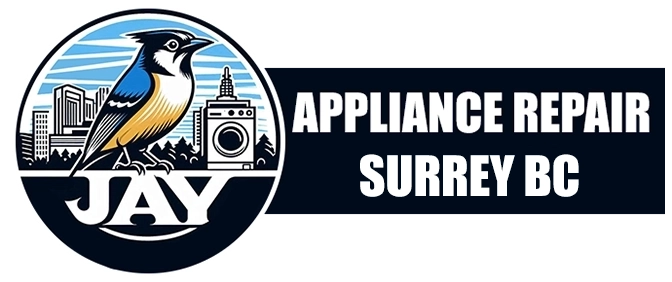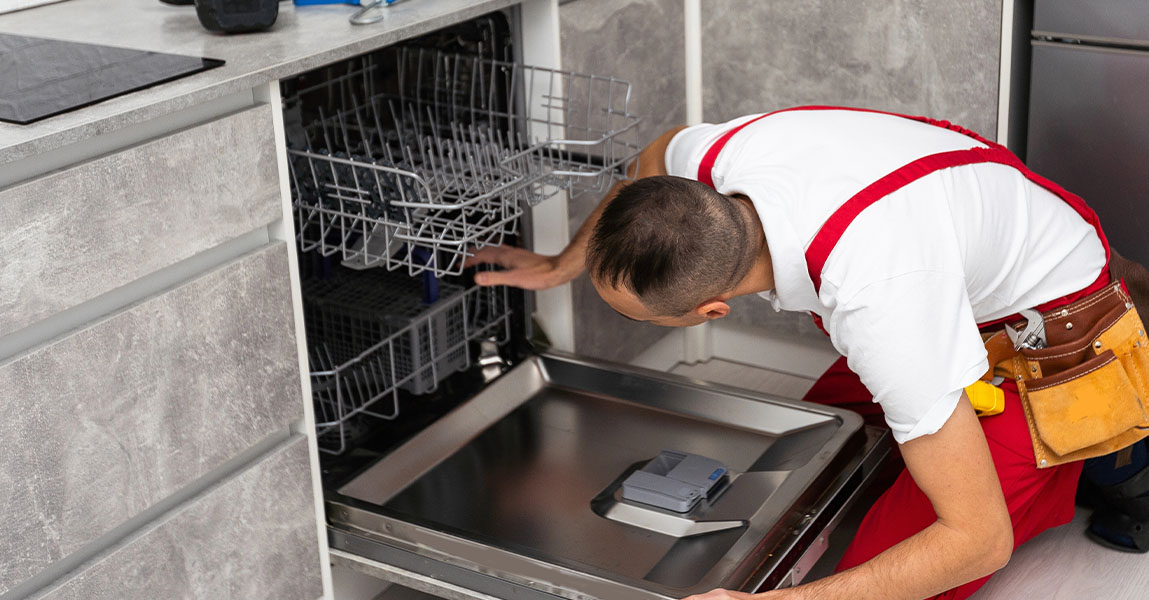When your dishwasher won’t fill with water, it brings the whole kitchen to a stop. We count on that steady wash cycle to handle a load of dishes without any babysitting. So when we open the door and see dry plates and crusty bowls, the confusion and frustration can hit fast. We’ve been there, and we’ve helped fix this exact issue many times.
It often boils down to one critical part—the inlet valve. This small valve controls whether water can enter the appliance. Without it working properly, your dishwasher just won’t get what it needs to clean anything. Therefore, it helps to understand how it functions, how to check it, and what other problems could be causing the water issue.
Let’s walk through what you can inspect safely, when to call for help, and how we at JAY Appliances handle issues like these during appliance repair in Surrey.
What the Inlet Valve Does and Why It Matters
To clarify, the inlet valve is an electrically operated valve that opens at the beginning of the wash cycle. It allows clean water from your home’s plumbing to enter the tub.
This part usually opens when the control board sends power, and water pressure does the rest. However, if anything blocks the valve or the power doesn’t reach it, the dishwasher stays dry. Consequently, even though everything seems to power on fine, no cleaning actually happens.
A clogged screen or internal mechanical failure can both prevent water from entering. On the other hand, electrical issues could mean the valve never receives the signal to open at all.
Most importantly, diagnosing this valve early on saves time. A failed valve isn’t expensive or difficult to replace, and in many cases, it’s the quickest path to a clean kitchen again.
Easy First Checks Before Looking at the Valve
Before you get to the inlet valve, it’s good to rule out a few simpler things.
Firstly, double-check that the door is latching completely. Most dishwashers won’t start or fill if the door sensor isn’t satisfied. Secondly, see if the float mechanism is stuck. This float acts like a level sensor and will shut off water if it falsely believes the tub is already full.
Also, make sure no one recently shut off the hot water supply valve under the sink. Likewise, check for kinked or blocked hoses where the dishwasher connects to your plumbing.
Once those are clear, you can move to inspect the valve itself.
How to Safely Inspect the Inlet Valve
To start, you’ll need to pull the dishwasher slightly forward so you can access the bottom panel. After turning off the power and water supply, remove the kickplate and look underneath.
The inlet valve usually connects directly to a braided hose or copper line, with two wires attached to a solenoid. The valve may also have a mesh screen where water enters. Over time, this screen can collect sediment or minerals from hard water.
You can disconnect the hose and use a flashlight to inspect the screen. If it looks blocked, gently clean it with a soft brush or soak it in vinegar to loosen buildup.
However, if the screen is clean and there’s still no water flow, the solenoid might have failed. In that case, testing with a multimeter for continuity is the next step. No continuity usually means the valve is dead.
When to Replace the Valve and What to Expect
If the valve shows no continuity or the solenoid doesn’t respond when power is supplied, replacing it is the logical step. Fortunately, inlet valves are affordable and widely available.
Replacement involves disconnecting the old valve, transferring the hose and wire connections, and tightening everything securely. You should always check for leaks once everything is reconnected.
We usually carry replacements in our service vehicles when responding to dishwasher issues. That way, we can perform dishwasher repair in Surrey on the spot if the diagnosis confirms the valve is at fault.
Likewise, we test the electrical connections afterward to ensure the valve opens when it should during a cycle. That ensures the new part actually solves the problem—not just patches over a deeper one.
Other Electrical and Control Issues That Mimic Valve Failure
Sometimes, the problem seems like a bad valve, but the root cause is something upstream.
For instance, if the control board isn’t sending power to the valve, no replacement will help. In other words, the valve is just a symptom of a broader failure. This could include broken wires, a failed relay, or an issue with the timer in older models.
We’ve also seen float switches that fail internally. They don’t look stuck physically, but they still misreport the water level and prevent the valve from activating.
In these cases, we take extra time to trace the electrical path, checking from the board to the valve. That gives us full confidence that replacing the valve will actually resolve the issue.
Extra Tip: Install a Screen Filter If You Have Hard Water
Many people don’t realize how much mineral buildup affects the inlet valve’s screen over time. If you live in an area with hard water, that buildup can come back even after a cleaning.
In addition, small sand or rust particles from aging plumbing can also clog the screen quickly. Installing a small inline screen filter where the hose connects under your sink can reduce this dramatically.
It’s a small cost and takes under five minutes to install. But it can prevent repeated blockages and help your new valve last much longer.
This is one of those little upgrades we often suggest when doing routine maintenance or minor repairs. It pays off quietly in the background.
Avoiding Future Problems Through Regular Maintenance
Even though we often focus on breakdowns, a lot of dishwasher issues can be avoided through regular maintenance.
For example, running a vinegar rinse every few weeks can reduce mineral buildup. Likewise, inspecting the float, screen, and supply hose connections during spring cleaning goes a long way.
If you notice slower fills, odd noises, or changes in wash quality, don’t wait for a total failure. As a result, you can often catch small issues before they become big ones.
That’s how we approach every appliance repair in Surrey. We don’t just fix the obvious problem—we look around to see what’s building up in the background.
If you’re not sure how to inspect something safely or feel uncomfortable working near water and electricity, don’t take chances. It’s always safer to get help from someone who works with this equipment daily.
Need help diagnosing or fixing your dishwasher’s water issues? Feel free to contact JAY Appliances and we’ll walk through the steps with you or schedule a service call. We’re happy to help, even if you’re just trying to figure out the basics.
FAQ
Why does my dishwasher start but not fill with water?
Usually, it’s because the inlet valve isn’t opening, the float switch is stuck, or the water supply is off. Start by checking the water valve under the sink and whether the float can move freely.
Can I clean the inlet valve myself?
Yes, if you turn off power and water first. The screen can often be rinsed or scrubbed gently. Just be careful with electrical parts and don’t force anything.
Is it expensive to replace an inlet valve?
Not really. The part itself is usually affordable and most replacements can be done within an hour. The real cost comes from labor if you call in help.
How can I tell if the problem is electrical instead of the valve?
If the valve tests fine with a multimeter and still won’t open, it may not be receiving power. At that point, you’ll need to check the wiring, control board, or float switch connections.
Do I need to replace the whole dishwasher if the inlet valve fails?
No. Inlet valve issues are one of the more routine dishwasher repairs and don’t usually mean the machine is done for. Many dishwashers run for years after a simple valve replacement.

